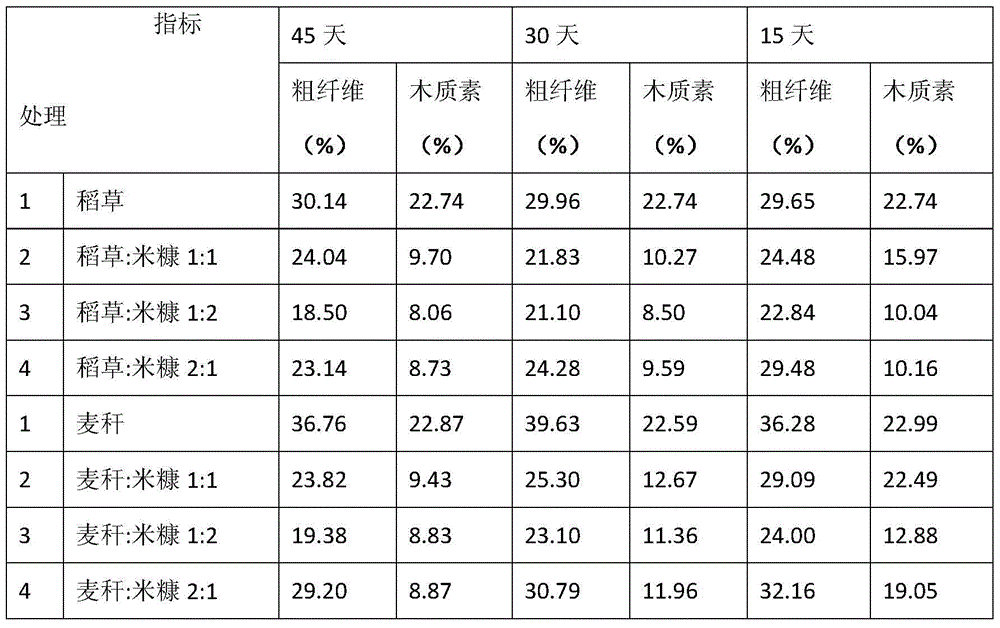A technology for rapidly decomposing rice and wheat straw
A rice and wheat straw and decomposition technology, applied in the direction of organic fertilizers, etc., can solve the problems that the common people are difficult to grasp, difficult to popularize, and the straw cannot be completely disposed of, and achieves the effect of strong adaptability
- Summary
- Abstract
- Description
- Claims
- Application Information
AI Technical Summary
Problems solved by technology
Method used
Image
Examples
Embodiment 1
[0022] A technology for quickly decomposing rice and wheat straw. The method is to mix 1 part of rice straw with 1 part of rice bran, stir evenly, stack it under the tree, let it ferment and decompose naturally, and turn the pile 10 to 20 days after the mycelium grows. Once, until completely degraded.
Embodiment 2
[0024] A technology for quickly decomposing rice and wheat straw. The method is to mix 1 part of rice straw and 2 parts of rice bran, stir evenly, pile them up in the paddy fields, let them ferment and decompose naturally, and turn them over 10 to 20 days after the mycelium grows. Stack once until completely degraded.
Embodiment 3
[0026] A technology for quickly decomposing rice and wheat straw. The method is to mix 2 parts of rice straw and 1 part of rice bran, stir evenly, stack them in the paddy fields, let them ferment and decompose naturally, and turn them over 10 to 20 days after the growth of mycelium. Stack once until completely degraded.
PUM
 Login to View More
Login to View More Abstract
Description
Claims
Application Information
 Login to View More
Login to View More - R&D
- Intellectual Property
- Life Sciences
- Materials
- Tech Scout
- Unparalleled Data Quality
- Higher Quality Content
- 60% Fewer Hallucinations
Browse by: Latest US Patents, China's latest patents, Technical Efficacy Thesaurus, Application Domain, Technology Topic, Popular Technical Reports.
© 2025 PatSnap. All rights reserved.Legal|Privacy policy|Modern Slavery Act Transparency Statement|Sitemap|About US| Contact US: help@patsnap.com

